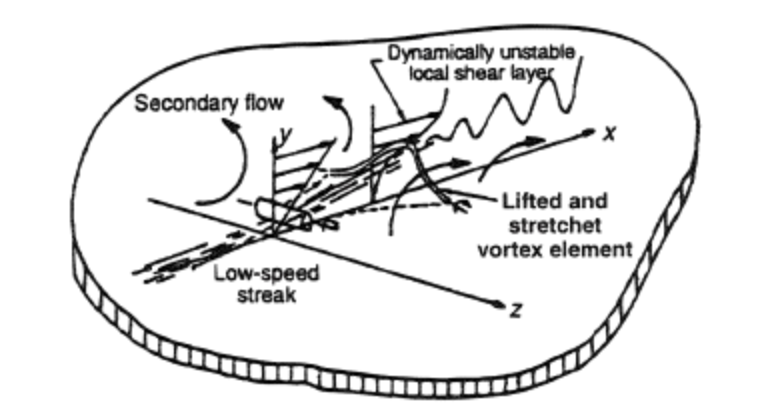
As a limit of this situation, the flow becomes a superposition of a variety of interacting nonlinear disturbances with nearly random phases, a state of chaotic or nearly chaotic fluctuations that is commonly described as turbulence
In fact, two primary motivations for studying fluid-flow stability are
- to understand the process of laminar to turbulent transition
- to predict the onset of this transition
In this analysis, the perturbations are commonly assumed to be small enough so that linearization is possible through neglect of quadratic and higher order terms in the perturbation variables and their derivatives
In addition, a real flow may be stable to infinitesimal disturbances (linearly stable), but may be unstable to sufficiently large disturbances (nonlinearly unstable)

1NASA Glenn Research Center. Beginners Guide to Aeronautics: Drag of a Sphere.
https://www1.grc.nasa.gov/beginners-guide-to-aeronautics/drag-of-a-sphere/
2Kline SJ, Reynolds WC, Schraub FA, Runstadler PW. The structure of turbulent boundary layers. Journal of Fluid Mechanics. 1967;30(4):741-773.